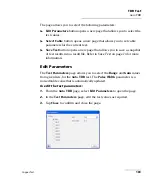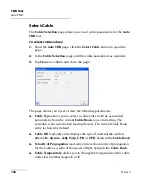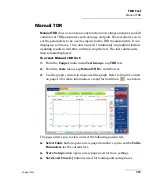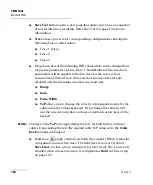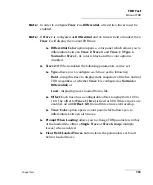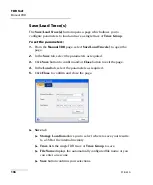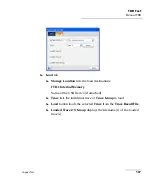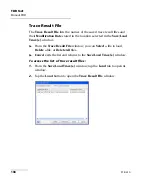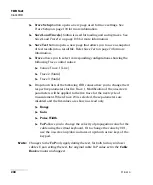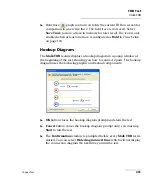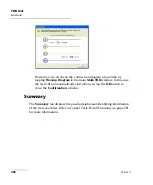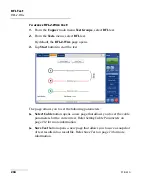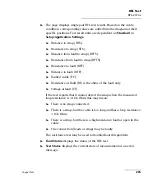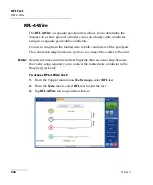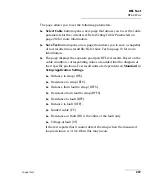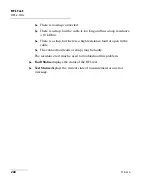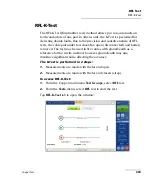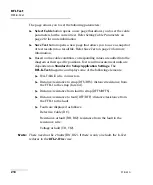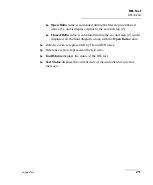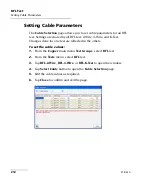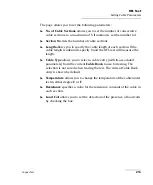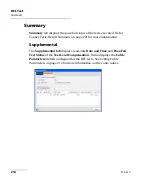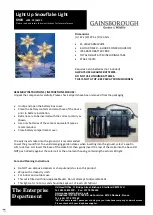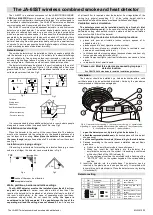
Copper Test
203
13 RFL Test
RFL (resistive fault locate) testing is the most accurate way to locate cable
faults such as shorts, grounds, and battery crosses. Before performing RFL
tests, install the strap(s) at the other end of the cable. Graphical hook up
diagrams and results speed interpretation and provide adjustable
parameters of the tests and cables under test for more accuracy. RFL uses
a series of resistance measurements across the faulted and reference
conductors with the far end strap to determine the resistance of each
section of the conductor relative to the test set, fault, and strap (however,
accuracy may be compromised due to noise oscillators or toners which
inject noise and errors, should not be used in place of a very low resistance
far end strap).
There are 3 RFL tests to choose from:
RFL-2-Wire
RFL-4-Wire
RFL-K-Test
RFL-2-Wire
The
RFL-2-Wire
test allows you to locate resistive faults between tip to
ground, or ring to ground. By default, the unit assumes that the fault cable
is connected to ring. If the distance to fault is greater than the strap, the
tester will automatically reverse the leads internally and change the results
diagram to reflect this.
The
connection diagram
shows you how to connect the cables to the unit.
The green lead is used as reference.
Note:
Results are less accurate than a separate good pair setup.

